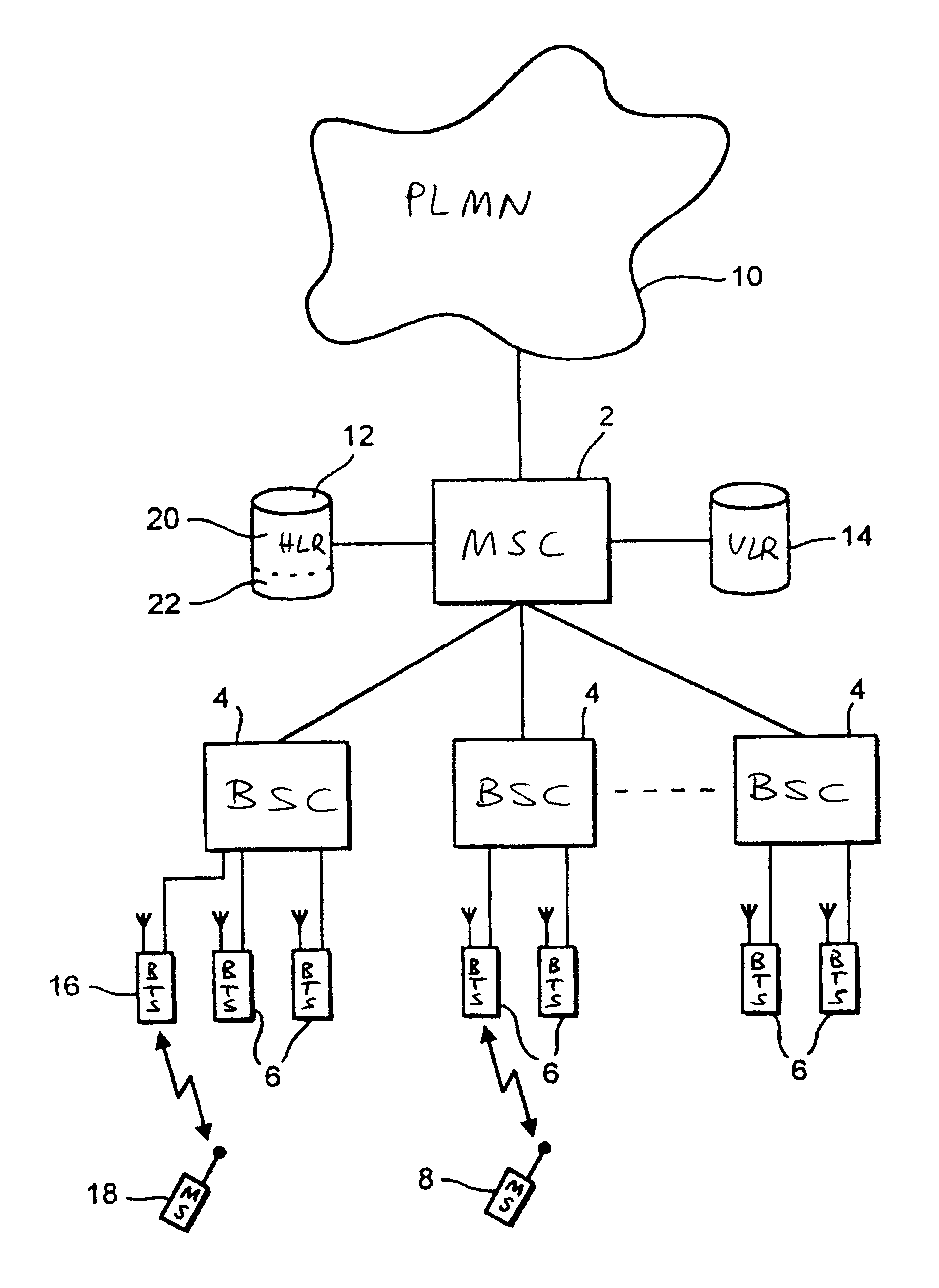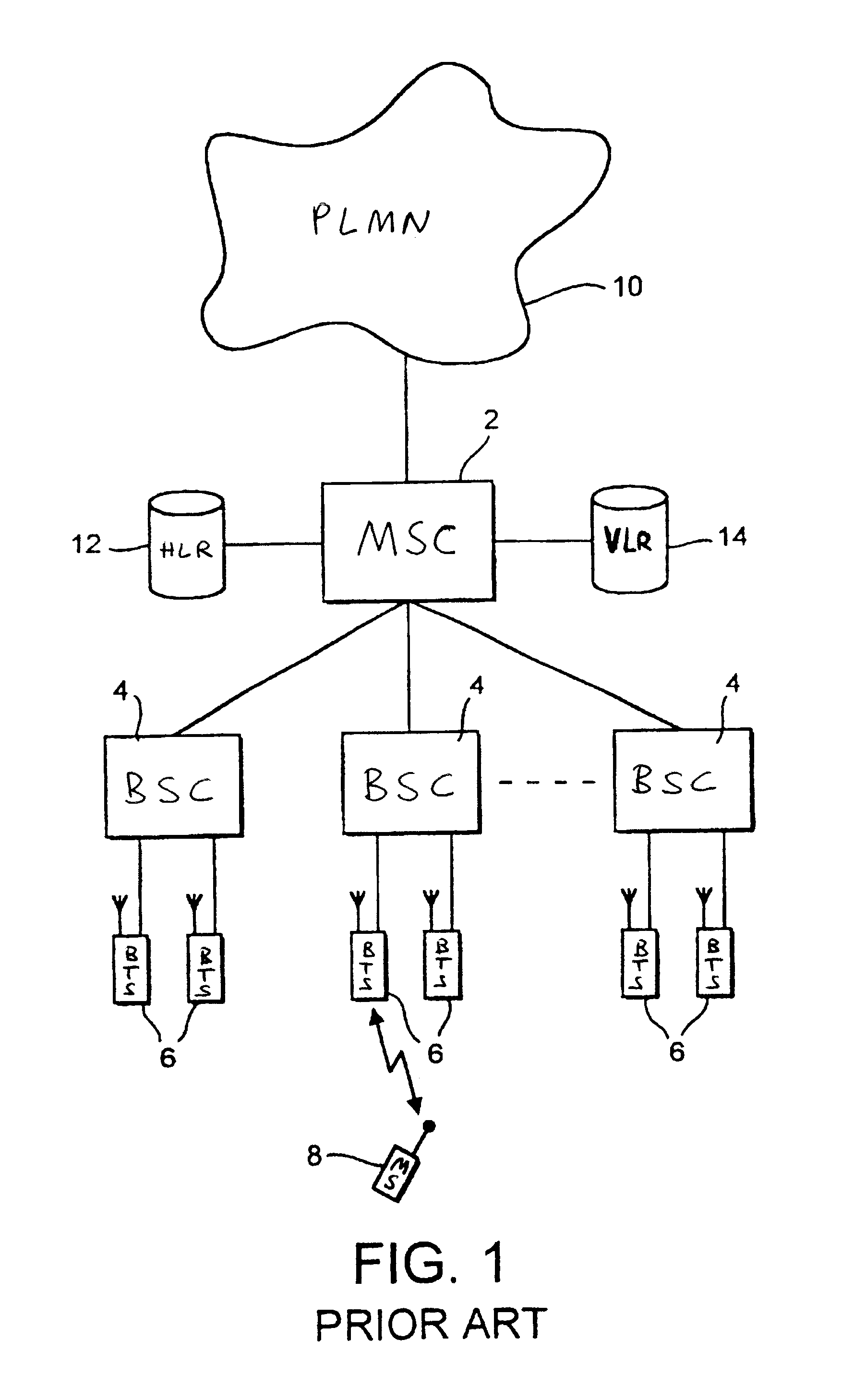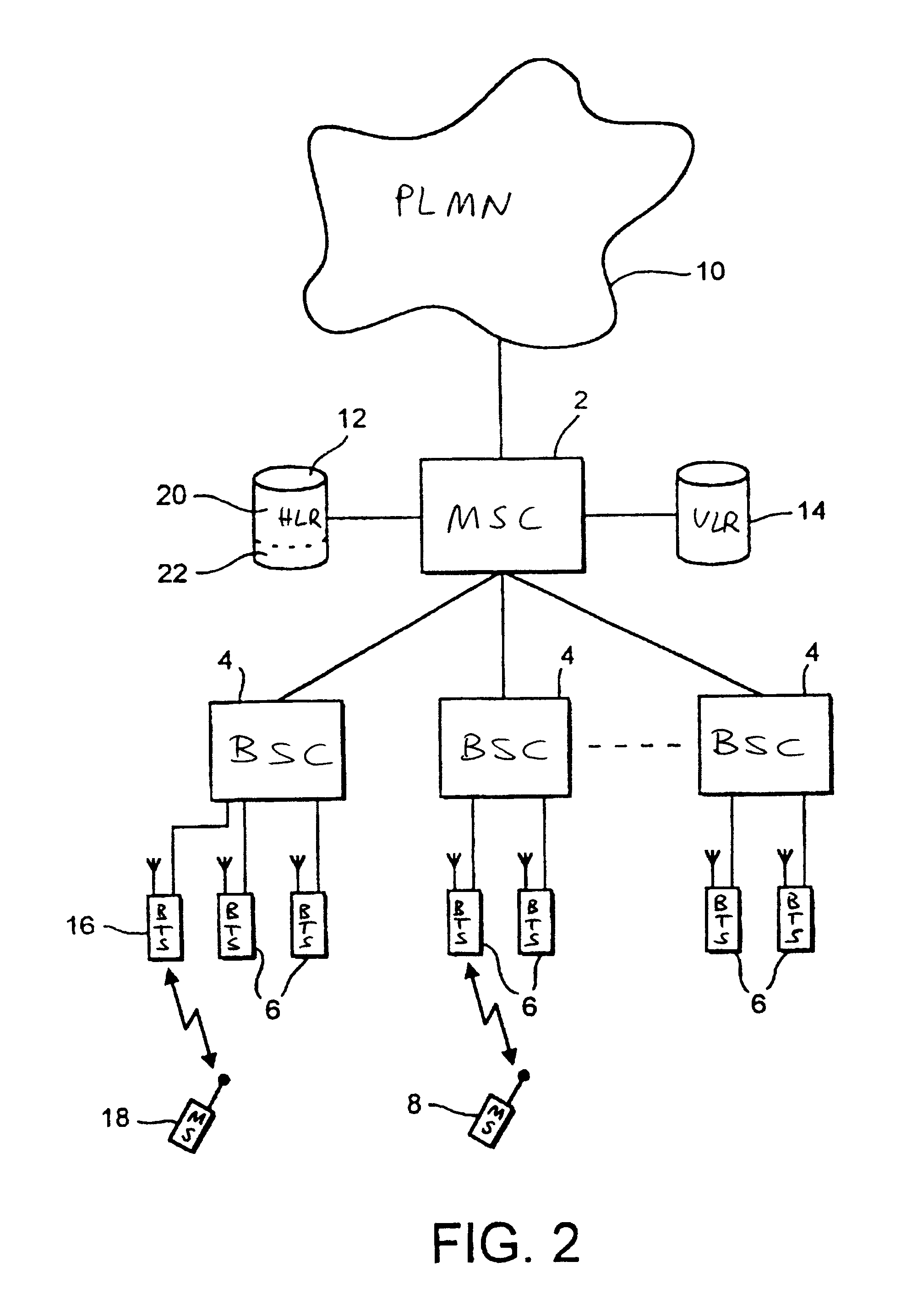Mobile communications system having a cellular communications network comprising a public network portion and a private network portion using a common radio interface protocol
- Summary
- Abstract
- Description
- Claims
- Application Information
AI Technical Summary
Benefits of technology
Problems solved by technology
Method used
Image
Examples
second embodiment
In a second embodiment, the cell identity code of the cell forming the private network portion is stored in a field in the memory of the mobile stations SIM.
The service indicator displayed on the mobile station display 40 is changed in response to detection by the processor circuit 38 of the stored cell identity code in the BCCH of the serving cell. The private cell identity code may be entered into the SIM memory of the mobile station 18 by the subscriber manually, or may be preprogrammed into the SIM.
third embodiment
In a third embodiment, a predetermined dedicated control signal identifying or specifying the private service indicator is broadcast in the private cell. When the processor circuit 38 of mobile station 18 detects this control signal in the BCCH of the current serving cell, it changes its service indicator display accordingly.
Further Details
Incorporated herein by reference are the further details of implementation of a mobile communications network provided in the GSM technical specifications, in particular GSM 03.22 (for functions related to mobile stations in idle mode), GSM 03.09 (for handover procedures) and GSM 05.08 (for radio subsystem link control). These can be obtained from the European Telecommunications Standards Institute (ETSI).
Other Embodiments
Although in the above embodiments the private network portion has included only a single private cell, it will be appreciated that a number of private cells may be included in a private network portion, by the appropriate provisi...
PUM
 Login to View More
Login to View More Abstract
Description
Claims
Application Information
 Login to View More
Login to View More - R&D
- Intellectual Property
- Life Sciences
- Materials
- Tech Scout
- Unparalleled Data Quality
- Higher Quality Content
- 60% Fewer Hallucinations
Browse by: Latest US Patents, China's latest patents, Technical Efficacy Thesaurus, Application Domain, Technology Topic, Popular Technical Reports.
© 2025 PatSnap. All rights reserved.Legal|Privacy policy|Modern Slavery Act Transparency Statement|Sitemap|About US| Contact US: help@patsnap.com



